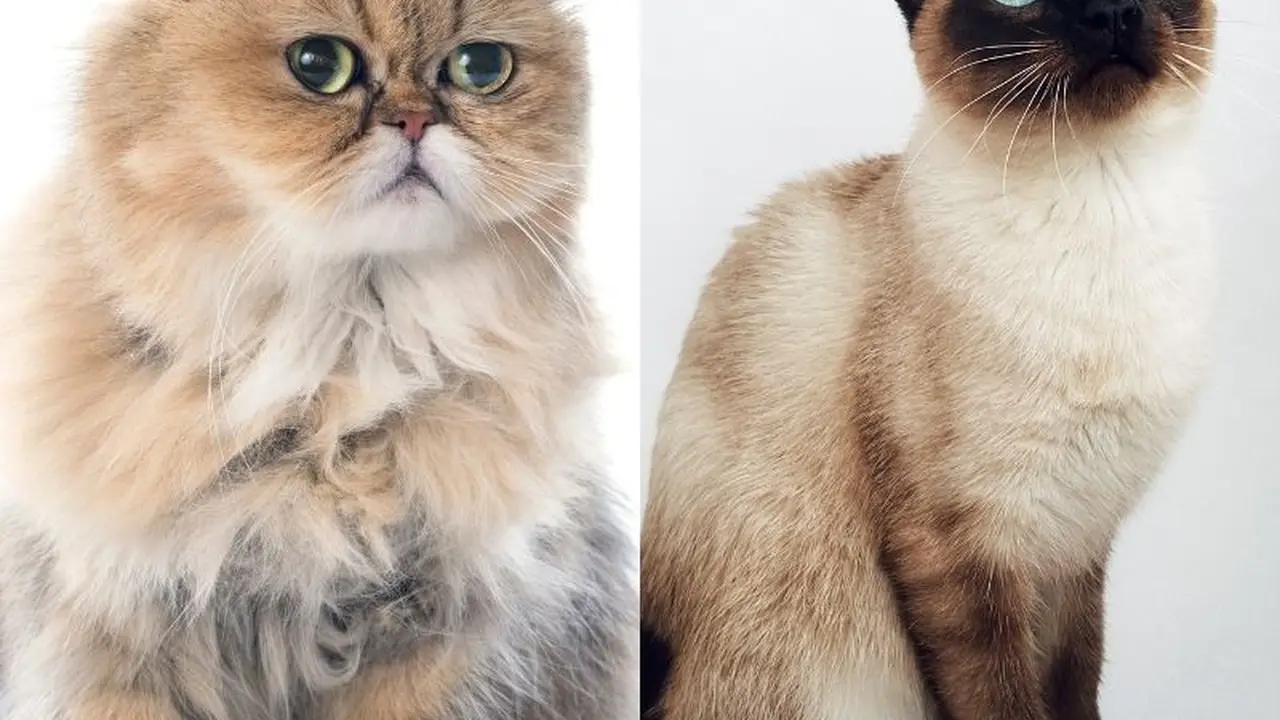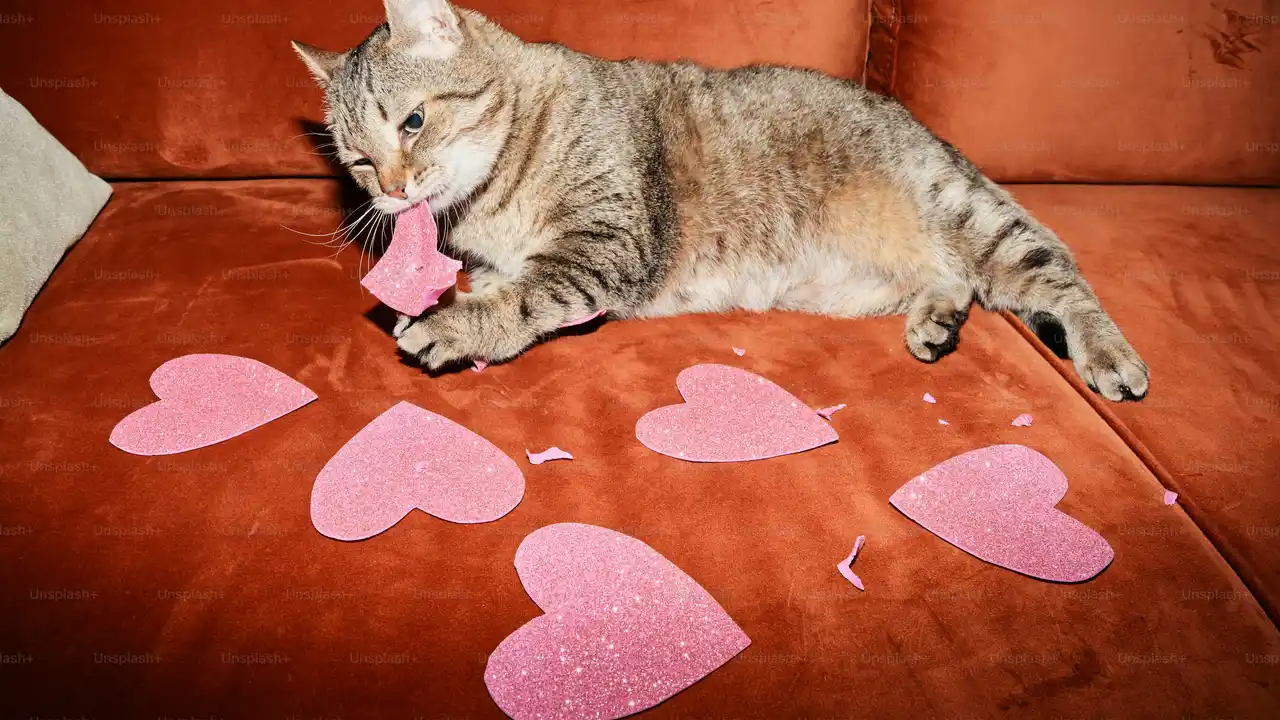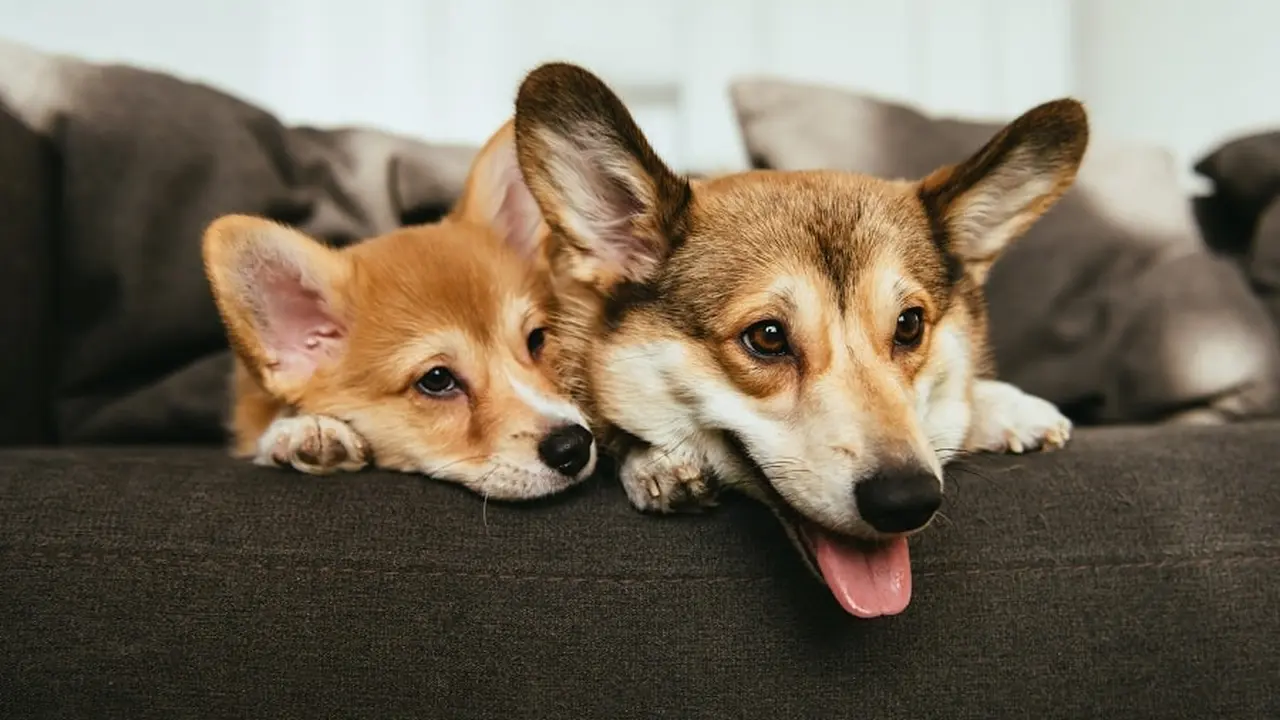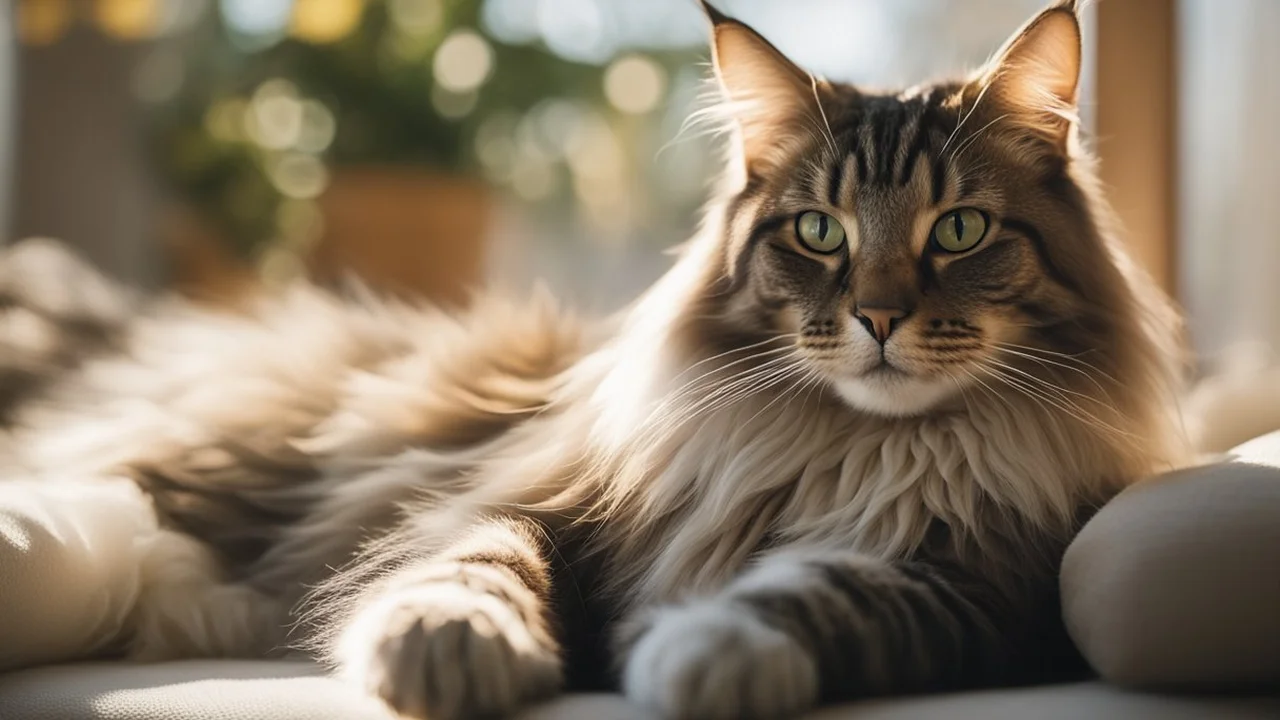Siamese vs. Persian: Which Cat Breed is Right for You?
Siamese and Persian cats are beautiful, but very different breeds. This article compares their personalities, grooming needs, and health issues. Find the perfect cat for your home.

Siamese Cat Breed Overview Temperament and Characteristics
So, you're thinking about getting a Siamese or a Persian cat? Excellent choices! Both are gorgeous and bring a lot of personality to the table. But they're definitely not the same. Think of it like choosing between a sports car and a luxury sedan. Both are great, but they cater to different needs and tastes. Let's dive into the details of the Siamese cat first.
Siamese cats are known for their striking blue almond-shaped eyes, short, sleek coats, and distinctive color points (ears, face, paws, and tail). They're originally from Thailand (formerly Siam, hence the name) and have a long and fascinating history. But it’s their personality that really makes them stand out.
Temperament: Siamese cats are talkative, intelligent, and incredibly social. They're often described as "dog-like" because they bond strongly with their families and love to be involved in everything you do. Don't be surprised if your Siamese follows you from room to room, "helping" with chores, and "chatting" with you all day long. They’re extremely affectionate and crave attention. If you’re looking for a feline shadow, this is your breed!
Activity Level: Siamese cats are energetic and playful. They need plenty of toys and interactive playtime to keep them entertained. Puzzle toys, feather wands, and even simple cardboard boxes can provide hours of fun. Without enough stimulation, they can get bored and potentially destructive. So, be prepared to dedicate time to playing with your Siamese each day.
Grooming: Good news! Their short, sleek coat requires minimal grooming. A weekly brushing is usually sufficient to remove loose hair and keep their coat shiny. They also tend to be quite fastidious groomers themselves.
Persian Cat Breed Overview Temperament and Characteristics
Now, let's switch gears and talk about Persian cats. These fluffy felines are the epitome of elegance and grace. With their long, flowing coats, sweet faces, and calm demeanor, they're often referred to as the "furniture" of the cat world – beautiful to look at, but not always the most active.
Persians are one of the oldest cat breeds, originating in Persia (modern-day Iran). They are known for their luxurious, long coats, round faces, and large, expressive eyes. Their gentle and affectionate nature makes them a popular choice for families and individuals alike.
Temperament: Persians are known for their sweet, gentle, and docile personalities. They're not as demanding of attention as Siamese cats, but they still enjoy cuddling and being petted. They are more laid-back and prefer a calm and quiet environment. They're often content to lounge around the house, observing the world from a comfy spot. If you're looking for a cat that will simply chill with you, a Persian might be a perfect fit.
Activity Level: Persians are less energetic than Siamese cats. While they enjoy playing, they're not as demanding of constant stimulation. A few toys and some gentle playtime each day are usually sufficient. They also tend to be less destructive than Siamese cats, making them a good choice for people who want a more low-maintenance companion.
Grooming: This is where Persians require a significant commitment. Their long, luxurious coat needs daily brushing to prevent mats and tangles. Regular bathing (every few weeks) is also essential to keep their coat clean and healthy. Without proper grooming, their fur can become matted, painful, and even lead to skin problems. If you're not prepared to dedicate time to grooming, a Persian cat is probably not the right choice for you.
Siamese Cat vs Persian Cat Comparing Key Differences
Okay, let's break down the key differences between these two breeds:
- Energy Level: Siamese are high-energy; Persians are low-energy.
- Vocalization: Siamese are very vocal; Persians are relatively quiet.
- Grooming Needs: Siamese require minimal grooming; Persians require extensive grooming.
- Attention Needs: Siamese crave attention; Persians are more independent.
- Playfulness: Siamese are highly playful; Persians are moderately playful.
Grooming Products for Persian Cats Recommended Brushes and Shampoos
If you're leaning towards a Persian, you *need* to be prepared for the grooming commitment. Here are a few recommended products to help you keep that magnificent coat in tip-top shape:
- Slicker Brush: This is your everyday workhorse. Look for one with fine, angled bristles that can reach deep into the coat to remove loose hair and prevent mats. The Hartz Groomer's Best Slicker Brush is a good starting point (around $8).
- Metal Comb: A metal comb is essential for detangling mats and knots. Choose one with wide-set teeth and rounded tips to avoid irritating your cat's skin. The Safari Cat Flea Comb (yes, even if they don't have fleas – it's great for detangling!) is a good option (around $6).
- De-Matting Tool: For those stubborn mats that just won't budge, a de-matting tool can be a lifesaver. Be very careful when using these, as they can easily irritate the skin. The FURminator Long Hair Deshedding Tool for Cats (around $30) is popular, but use it gently and sparingly.
- Cat Shampoo: Choose a shampoo specifically formulated for cats, as human shampoo can be too harsh. Look for a moisturizing shampoo that will help prevent dryness and breakage. The Burt's Bees for Cats Hypoallergenic Shampoo (around $8) is a good choice. For Persians, a whitening shampoo can help keep their coat bright and white.
Siamese Cat Toys and Enrichment Ideas Puzzle Toys and Scratching Posts
Siamese cats need a lot of mental and physical stimulation. Here are some ideas to keep them entertained:
- Puzzle Toys: These toys challenge your cat's intelligence and problem-solving skills. Look for toys that dispense treats or require your cat to manipulate objects to get a reward. The Trixie Pet Products Mad Scientist Turn Around Activity Strategy Game (around $25) is a great option.
- Feather Wands: These toys are irresistible to most cats. The Da Bird feather toy (around $15) is a classic for a reason. Just be sure to supervise playtime and put the toy away when you're finished, as cats can ingest the feathers.
- Scratching Posts: Scratching is a natural behavior for cats, and providing them with scratching posts can help prevent them from scratching your furniture. The SmartCat Ultimate Scratching Post (around $50) is a tall, sturdy post that most cats love.
- Cat Trees: Cat trees provide cats with a place to climb, scratch, and perch. They also offer a sense of security and privacy. The Go Pet Club 62-Inch Cat Tree (around $80) is a popular option.
Siamese Cat Health Concerns and Persian Cat Health Concerns
Both breeds are prone to certain health issues. Knowing these in advance can help you be a more responsible and prepared owner.
Siamese Cats: Siamese cats are generally healthy, but they are prone to certain genetic conditions, including:
- Progressive Retinal Atrophy (PRA): A degenerative eye disease that can lead to blindness.
- Amyloidosis: A condition in which abnormal protein deposits accumulate in the organs.
- Asthma: A respiratory condition that can cause coughing and wheezing.
Persian Cats: Persian cats are prone to a number of health problems, largely due to their brachycephalic (flat-faced) features. These include:
- Polycystic Kidney Disease (PKD): A genetic disease that causes cysts to form on the kidneys.
- Progressive Retinal Atrophy (PRA): Same as with Siamese.
- Brachycephalic Airway Syndrome: Difficulty breathing due to their flattened faces.
- Hypertrophic Cardiomyopathy (HCM): A heart condition.
Regular vet checkups are crucial for both breeds to catch any potential problems early.
Cost of Owning a Siamese Cat and Cost of Owning a Persian Cat
The initial cost of purchasing a Siamese or Persian kitten can vary depending on the breeder, location, and pedigree. Generally, you can expect to pay between $500 and $2000 for a well-bred kitten.
But the initial cost is just the beginning. You also need to factor in the ongoing costs of food, litter, vet care, toys, and grooming supplies. Persians, with their extensive grooming needs, will likely be more expensive to maintain than Siamese cats. Expect to spend at least $100 - $200 per month on basic care for either breed. Persian grooming, especially if you opt for professional services, could easily add another $50 - $100+ per month.
Making the Right Choice Factors to Consider Before Getting a Cat
Ultimately, the best cat breed for you depends on your lifestyle, personality, and budget. Here are some questions to ask yourself before making a decision:
- Do you have time for daily grooming? If not, a Persian is probably not the right choice.
- Do you want a cat that is active and playful? If so, a Siamese might be a better fit.
- Do you have a calm and quiet home? Persians thrive in peaceful environments.
- Are you prepared to deal with potential health problems? Both breeds are prone to certain health issues.
- What is your budget? Persians can be more expensive to maintain due to their grooming needs.
Consider visiting a local cat shelter or rescue organization. You might find a Siamese or Persian mix that steals your heart! Adopting a cat in need is a rewarding experience.
:max_bytes(150000):strip_icc()/277019-baked-pork-chops-with-cream-of-mushroom-soup-DDMFS-beauty-4x3-BG-7505-5762b731cf30447d9cbbbbbf387beafa.jpg)






